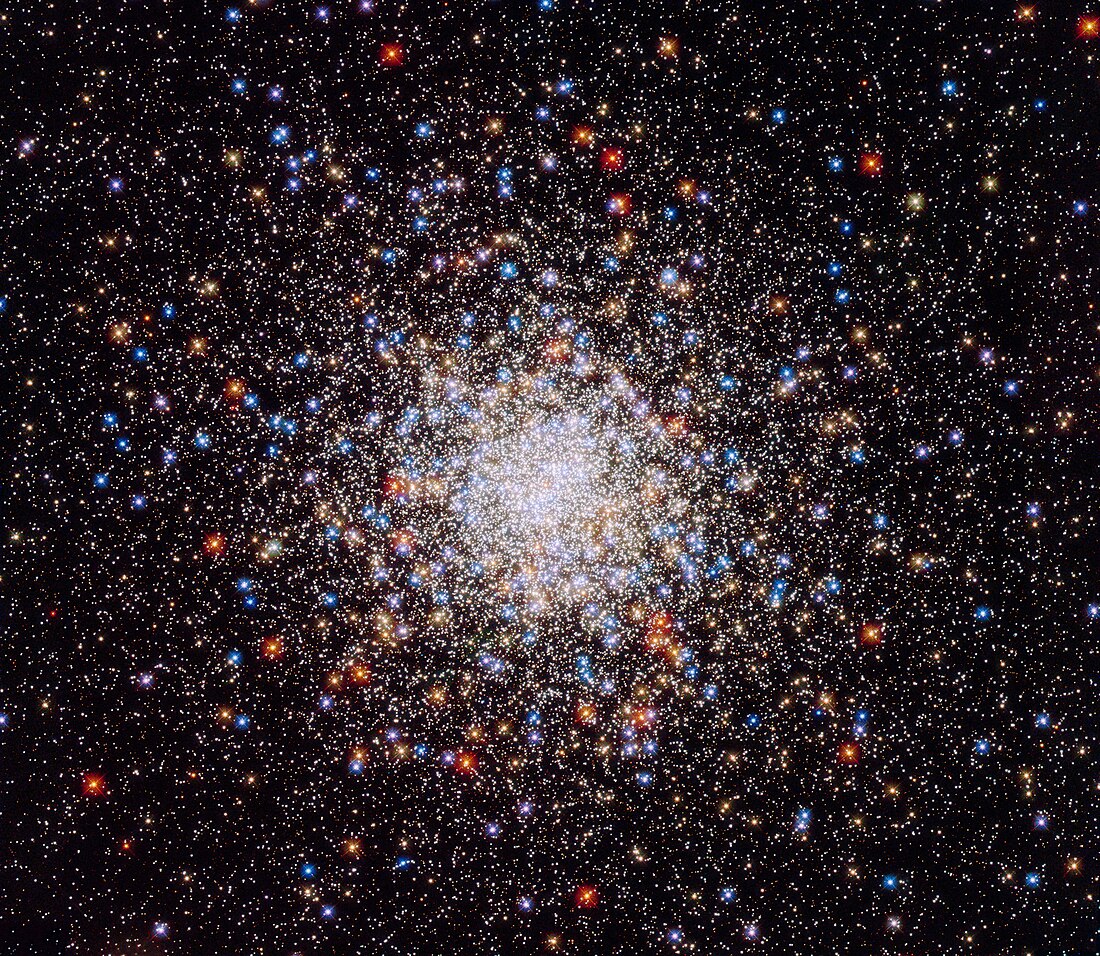Top Qs
Timeline
Chat
Perspective
NGC 6541
Globular cluster in the constellation Corona Australis From Wikipedia, the free encyclopedia
Remove ads
NGC 6541 (also known as Caldwell 78) is a globular cluster of stars in the southern constellation of Corona Australis. The globular cluster was discovered by Niccolò Cacciatore at the Palermo Astronomical Observatory, Sicily, on March 19, 1826. It was independently found by James Dunlop on July 3, 1826. The cluster has an apparent visual magnitude of 6.3 and an angular diameter of 15′. It is visible with binoculars or a small telescope.[4]
Located at a distance of 24.8 kly (7.6 kpc) from the Sun,[3] it is orbiting within the central region of the Milky Way about 7.2 kly (2.2 kpc) from the Galactic Center.[8] It is considered a metal-poor inner halo cluster, being the third most metal-poor globular cluster within 9.8 kly (3 kpc) of the center.[8] The cluster has 5.72×105 times the mass of the Sun.[5] It is estimated to be around 12.9 billion years old,[6] and is believed to have undergone core collapse.[8] A total of 94 blue straggler members have been identified,[9] as well as three W Ursae Majoris and nine SX Phoenicis variables.[10]
Remove ads
References
External links
Wikiwand - on
Seamless Wikipedia browsing. On steroids.
Remove ads

